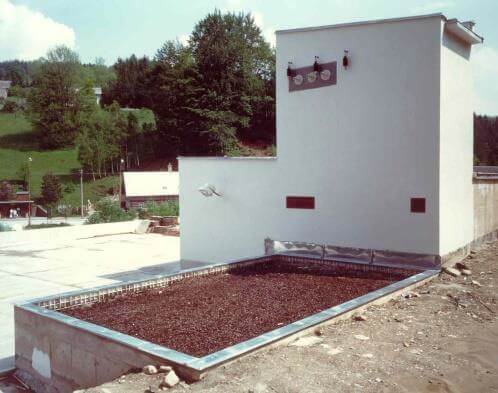Deodorization
Introduction:
Deodorization can be performed by biological or chemical means.
Biotechnology is based on the principle of disposal of harmful substances through microorganisms. Biotechnology is used especially for low concentrations of biodegradable pollutants. The resulting substances CO2 and H2O are harmless for the environment and because no other waste is produced, the technology is so-called waste free.
For biological deodorization two different pieces of equipment can be used – bio-filter and bio-column. The choice depends on the chemical composition and concentration of the emissions.
Biotechnology is used for odor removal (in some cases as a final step) as well as for removal of biodegradable substances (ammonia, acetone, styrene, etc.).
The chemical process is based on the principle of absorption of the emissions through a chemical reaction into the absorption media – the acid medium as the first stage, the oxidizing medium as the second stage and into the alkali medium as the third stage. The combination is always tailored acc. to the input data.
List of references:
KOŠA Bohumileč, Czech republic
- Emission separation of styrene and acetone from laminating, scrubber and biofilter
- 4.000 m3/h
- Year of realization: 2010
ICN Czech Republic, a.s., Roztoky u Prahy, Czech republic
- Separation of odor emissions from the drier in the production of antibiotics, absorption.
- 20.840 Nm3/h
- Year of realization: 2005
Stabilplastik Měšice, Czech republic
- Emission separation of odor from production of pallets from recycled plastics, scrubber and biofilter
- 16.800 m3/h
- Year of realization: 2005
APIS – C, s.r.o., Mojšova Lůčka (Veterinary decontamination institute), Slovakia
- Scrubber before biofilter, purification of waste gases from rendering plants
- 60.000 m3/h
- Year of realization: 2005
LE & CO Horní Jirčany, Czech republic
- Disposal of odor emissions from the production of smoked meat, biological scrubber
- 1.500 – 1.800 m3/h
- Year of realization: 2003
DUNO CS, Moraveč, Czech republic
- Emission separation of styrene and acetone from laminating, scrubber and biofilter
- 14.400 m3/h
- Year of realization: 2000
town Rokytnice nad Jizerou, Czech republic
- Separation of odor emissions from urban biological wastewater treatment plant, scrubber and biofilter
- 6.000 Nm3/h
- Year of realization: 1996


